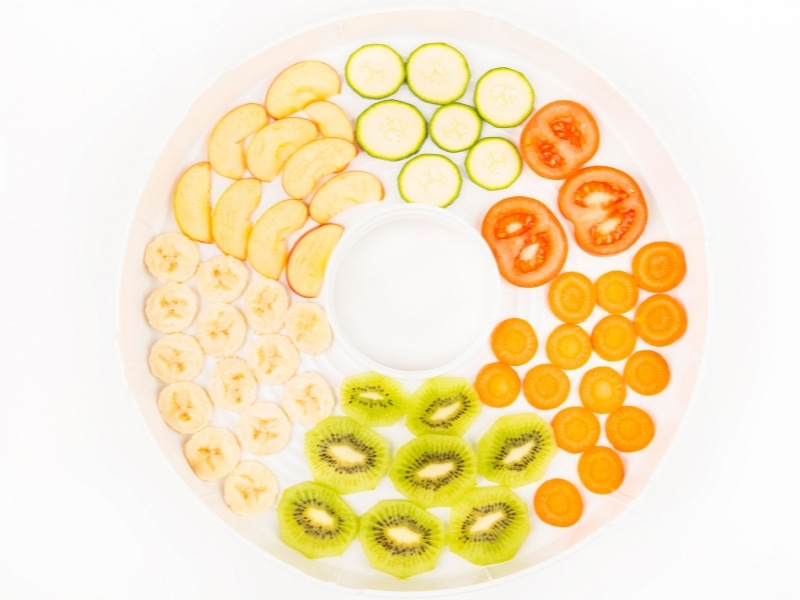Food dehydration or food drying for preserving purposes has been around in one way or another for centuries if not millennia. Until the last hundred years, fresh fruits and vegetables were actually encouraged to become dehydrated to the point of inedible perfection. The definition of a dehydrated food is stated in the dictionary to be the result of cooking or processing, rather than of any chemical or synthetic process.
The next time you go to the supermarket remember what it is you were looking for, and if possible that you are purchasing organically raised products. While they will cost more than non-organics, many of the deeply discounted organics turn out to be far superior in taste and quality to their non-organic counterparts.
As a chef I have had to learn to cook with what is readily available, many of which are processed, refined, or grown using pesticides and genetically modified seeds. We eat processed foods so often that we become immune to their poisons, in turn we become very unhealthy. While they may be clearer in their appearance they are often not as pure as they appear.
The process of dehydrating foods goes back to when man first began preparing meals out of fire. The temps of the fire would cause the meals to dry out and in some cases the fire may have also cooked them as well. The foods would then have been placed into a container such as a pot, where they remained until they were finished cooking.
opulent produce was a great seek after by people during ancient times due to the short supply of some foods and the bumpy travel schedules. People would accept starvation as a death sentence rather than continue traveling for days on end.
With the development of rail systems and wells, foods and spices were more accessible and a greater supply was created for those that continued traveling.
Given the desire for variety and convenience, foods were cooked in large amounts of water, rations of rice and wheat, and pulses such as beans and peas became available to all.
Technological advances allowed more and more food to be cooked outside of the home. Mobile kitchens are common in many parts of the world, and wealthy individuals have even found that cooking is a great way to allow more interaction with their family and friends.
The finer the gourmet the chef, the more attention they tend to get from their clients. Typically the chef is seen as someone who has a few special skills that make them capable of cooking the food required. Many times, it is not just the skills that are needed but the special glasses or cutlery as well.
For example, glassware is important in many types of cooking. Not only should the chef be wearing a set of glasses (which I find to be totally unnecessary), but also the set of cutlery is something that should be maintained. The knife is a very important tool and it should be kept in the correct set. For many chefs, it is a matter of tradition to be sure that the knife is sharpened throughout the day.
Properly sharpened knives are more effective for multipurpose tasks. The proper sharpening takes place long before the cooking starts. The chef will have the best chance of getting the task done right if the knife is sharpened regularly.
If you are using ceramic knives, they should not be exposed to peels or harsh weather conditions. If these are part of your tools, they need to be kept in a cool place like a drawer or tray.
So, don’t throw away that old fashioned knife. Go ahead and replace it with a new one, and don’t be afraid to sharpen it with care.
